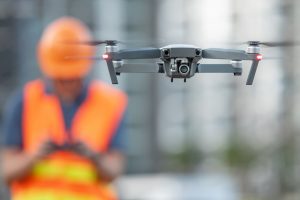Key Takeaways:
- Optics for drones equipped with infrared sensors enhance surveillance by providing a versatile optical system for various applications.
- Drones with advanced optics are used in agriculture, natural resource management, cinematography, and surveillance.
- Key considerations for drone-mounted optics include reliability, weight, and power efficiency, essential for effective surveillance.
- Image stabilization is essential for capturing clear footage, especially in challenging environments.
Optics for Drones: Capturing Wildlife and Tracking with Infrared Sensors
An optical drone dips low in front of a herd of antelope, gathering stunning footage for a new documentary. Equipped with advanced optics for drones mounted securely in its unobtrusive body, it is capable of taking high quality imagery even under unfavorable environmental conditions.
Later in the evening another drone, fitted with infrared sensors, might be sent out by the same research team. Its mission: determine where, in this desert region, large herds of animals are gathered. IR sensor work relies on the infrared light emitted by warm bodies.

The technology behind aerial drones, also known as unmanned aerial flight devices, has taken off in recent years. Drones are lighter, higher powered, and more maneuverable than ever before. Optics for drones have also seen great advances, and have the potential to take high quality machine vision into arenas that have never been open to such surveillance. Passive infrared sensors Here we’ll look at what it takes to put together an effective optical system for a drone. But first, what are drones actually used for?
Applications of Optical Drones
Drones outfitted with infrared sensors or other optical systems are important in a wide range of fields, from agriculture to natural resource management to cinematography, research, and defense. A few examples of UAV applications include:
- Checking the structural integrity of architectural structures, such as towers or bridges
- Scanning electrical equipment in buildings (for instance, switchgear, fuses, or breaker panels)
- Identifying the source of energy inefficiencies in buildings by scanning roofs and facades
- Long range evaluation of crop health and early identifying of problem spots
- Keeping track of livestock and determining movements of the herd
- Measuring water saturation or dryness over a specific area
- Providing support or an additional eye for search and rescue operations
- Using motion sensors to provide motion detection for security systems
- Detecting and tracking forest fires, and overseeing firefighting efforts
- Aerial photography; taking still images and video footage for movies, documentaries, and news reels.


For some of these applications, a drone may require a high quality aerial camera with the ability to produce high resolution video images even in adverse environments. For others, mini drones with passive infrared sensors for thermal imaging may be needed, or LIDAR for obstacle sensing or mapping terrain.
Key Considerations in Choosing Optics for Drones
When choosing the optical system to build into your drone, you’ll want to consider not only the chief purpose of the drone, but also the environment in which it will be used.
Reliability is often of central importance for drone-mounted optics and PIR sensors, as is the ability to perform effectively even under adverse conditions.
At what speed will the drone be moving, and will it need to collect data during smoky or stormy conditions? Will it need to function in very hot or very cold temperatures?
Low weight and minimal power consumption are also top considerations when designing optical systems and sensors for drones, as size, weight, and power are often non-negotiable. What is the maximum weight of the entire optical apparatus, including lens assembly and any mounts and housing? How much power are you able to provide? Answers to these questions will help you hone in on the perfect optical system for your unmanned aerial vehicle.
Stabilizing Your Drone-mounted Optics
When you’re taking a snapshot on your phone, you do your best to hold it still to get a high quality, unblurred image. If you’re using a drone to capture stellar overhead shots for a movie, you’ve got the same problem, but keeping steady suddenly becomes much more complex.
Images recorded by drones can be stabilized two ways: by technology focused on holding the drone still, in spite of any wind or adverse environmental conditions, and through image stabilization built into the optical system itself.
Image stabilization technology includes electronic image stabilization (EIS) and optical image stabilization (OIS). In EIS, an IMU (inertial measurement unit) sensor provides data on motion, and software then compensates for distortions. IMUs usually include both a three axis acclerater and a three axis gyroscope, and are also used to enable stable flight. In OIS, the motion experienced by the sensor is recorded and that data is used to manipulate the imaging device to compensate for the motion.
Quality Optics for Quality Imaging
Designing an effective optical system for a drone isn’t easy. You’ve got a hundred different constraints, and on top of that you need a stable imaging system to ensure your pictures don’t turn out a blur. That said, technological advances mean you can have it all— almost.
GREAT ARTICLE!
Share this article to gain insights from your connections!




